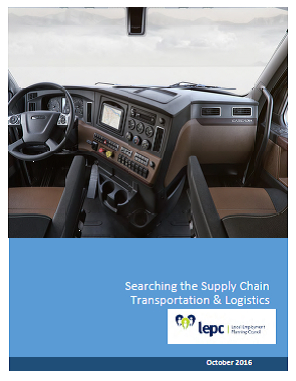To download the Strategic Plan brochure, click here.


To download the entire Strategic Plan PDF, click here.
Click on the tabs below to view the actions planned within the London Economic Region. Please reach out to us, if you would like to be involved in one of the actions.
Expanding current understanding of local labour market issues and needs and improving access to labour market information resources.
- According to industry research and consultation with area business associations during 2015, there are new businesses that are emerging, and changing jobs that are associated with them (e.g., drone technology, food analytics, artificial intelligence, corporate wellness). There is a need for students and job seekers to be made aware of the emerging and changing skills requirements in each sector to be better prepared for employment.
To download a copy of the report click the picture above.
- Small business employers (5-99 employees) need new strategies to improve employee attraction and retention. In the 2016 EmployerOne Survey, employers identified expansion as the number one reason for anticipated hires in 2016. This, coupled with employers indicating that the main reason for seperations during 2015 was employees 'quitting', indicates the potential for a great deal of movement in the local labour market in 2016.
To download a copy of the report click the pictures above.
Serving as a central point of contact and key facilitator for linking employers, service providers, other ministries and levels of government and other community groups to identify and respond to labour market and workforce development challenges and opportunities, and gaps in employment and training and human and social services, through collaborative planning.
- There is a need for a more coordinated, effective and integrated system to connect job seekers and employers across the four local areas (London, Elgin/St. Thomas, Middlesex and Oxford). Through community consultation with employers from all four areas in the region, employers have reported frustration at not being able to easily access the talent they need in their immediate area, despite a large pool of unemployed workers within the four areas.
Click the picture above to visit www.accesslocaltalent.com and explore local job boards and resources to help with employment.
Acting as a hub for connecting employers, industry associations, sector groups and other employer groups with appropriate employment and training services to address their workforce development needs. Working with local employment and training service providers, including those outside the Employment Ontario network such as Ontario Works Employment Assistance (OW-EA) and Ontario Disability Supports Program – Employment Supports (ODSP-ES), to coordinate services to employers, such as job development and job placements.
- Better understanding is needed in each Workforce Committee area (London, Oxford, Elgin, Middlesex) of where and how to support employers that have hard-to-fill vacancies. In the 2016 EmployerOne Survey results, hard-to-fill positions were identified as a key issue for 40% of employers.
- Employers need to be more aware of and using existing incentives and supports, so they can provide specific education and training for their employees. The 2016 EmployerOne and Hard to Fill Jobs Report 2016 both indicated two of the top four challenges to providing training or education for employees as "relevant training is not offered locally" and "awareness of existing training programs".

To download a copy of the resource guide click the picture above. To learn more about any of the programs or services mentioned in this guide visit www.worktrends.ca or http://www.links2work.on.ca/
- Employers need an easy and coordinated way to quickly access a wide range of talent from across the region (all of Oxford, Elgin, Middlesex and London). EmployerOne 2016 showed 38% of employers are having difficulty finding the right staff to fill current positions - an increase from 27% in 2015 and 59% say they expect to hire in 2016.
Collaborating with community stakeholders to develop projects related to the research and piloting of innovative approaches to addressing local labour market issues or opportunities.
- Statistics Canada data shows the labour force participation rate in the London Economic Region continues to drop (65.6% in 2011 to 63.4% in 2015) despite improvements in local labour market conditions. This drop is occurring in the primary working group age (25-54). There is a need to understand why the participation rate is down so communities can determine how to re-engage these potential workers.
Click the picture to download the report.
- The London Economic Region Vicinity Jobs Report for the fourth quarter of 2015 and the 2016 EmployerOne Survey indicated that entry-level requirements are changing. Service providers, employers and job seekers need easy to understand and industry specific information to help them post and apply for jobs successfully using current entry-level requirements.
View a number of fact sheets and infographics at www.worktrends.ca or take a look at our series of videos to help understand what is needed to post and apply for a job successfully.
- The Central Planning Table identified a need to reduce the continued heavy reliance of unemployed workers on Ontario Works support post-economic downturn. According to municipality case load data, the number of individuals and families who receive Ontario Works support increased during and immediately after the recent economic difficulties, and remains high despite local unemployment rates dropping and job opportunities increasing.
Working with provincial and community organizations, including other LEPCs, to identify and share local best practices that could inform action in other areas.
- There is a need for more effective communication between and among Employment Ontario and non-Employment Ontario service providers to better support employers and job seekers. There is currently little or no regular communication between or among Employment Ontario and non-Employment Ontario service providers making it difficult to gain accurate data.
Click the picture above to download a guide on developing communication between Employment Ontario service providers.
The following picture is an ssesment tool that can be used to develop best practives for effective communication.












